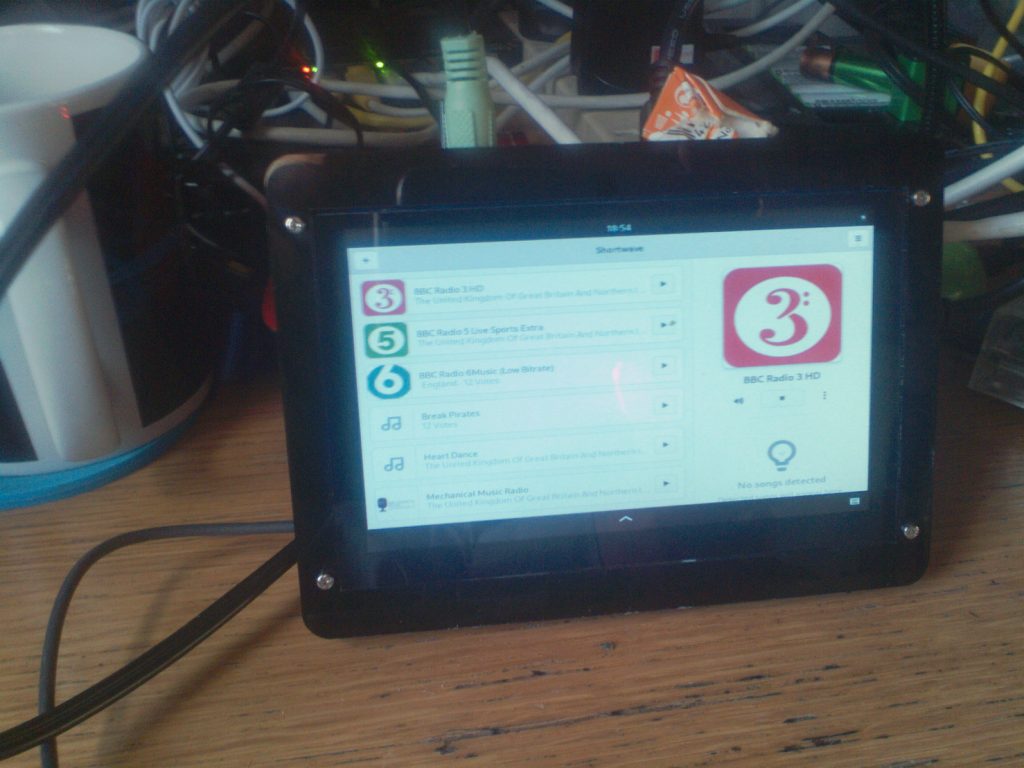
I figured it may be helpful to note the steps I needed to create my Touch screen internet radio. I bought my capacitative touch screen a few years ago and really haven’t had much joy with it. It’s a 5″ display and uses HDMI and USB for the touch screen. The orange card you can see poking out the the top is integral to the design as the micro-usb to drive the touch screen and display power isn’t a good fit.
I chose Postmarket OS because I know it uses phosh and it has a tested pi3 image. First I created the image for the pi3 following the instructions here: https://wiki.postmarketos.org/wiki/Raspberry_Pi_3_(raspberry-pi3)
It looks a bit daunting but actually, if you read thing through carefully, it’s pretty easy.
Once booted I had three issues I needed to resolve before I could unleash the magic. No Wifi, No Audio, A Squintworthy default resolution.
No Wifi This was because pmbootstrap didn’t include the broadcom firmware in the image. I ssh’ed in and ran sudo apk add linux-firmware-cypress rebooted and the wifi came up like a charm. I added it to the wiki for you 🙂
No Audio: You might not hit this issue as it was a packaging error but the resolution is this https://postmarketos.org/edge/2021/04/02/pipewire-pulse/
$ sudo apk update $ sudo apk add '!pipewire-pulse' $ sudo reboot
Squintworthy: The default resolution it launched in was 1024×768. Everything I learned about X11 is useless with phosh as it uses Wayland. First you need to discover your display device. Stackoverflow helped me here with:
raspberry-pi3:~$ ls /sys/class/drm card0 card0-HDMI-A-1 renderD128 version
The bit after card0 you can stuff into /etc/phosh/phoc.ini with something like the following stanza:
[output:HDMI-A-1] mode = 800x600 scale = 1
I think my screen is actually 800×480, or 848×480, but phosh hates it, even if I try and set a modeline, so weirdly squished screen ratio it is.
The last setting I’d like to set it is to force phosh into undocked mode by default so apps always take up the full screen, but I don’t know how to do that.
Finally, install flatpak, register flathub and install Shortwave the flatpak app is more up to date than the one in the alpine repos.
sudo apk add flatpak flatpak remote-add --if-not-exists flathub https://flathub.org/repo/flathub.flatpakrepo sudo flatpack install de.hackerfelix.Shortwave -y
I also installed gnome-weather so I can see if it will rain tomorrow.
In settings under power you will probably want to set “Blank Screen” to never, the pi has no buttons to wake it up.
